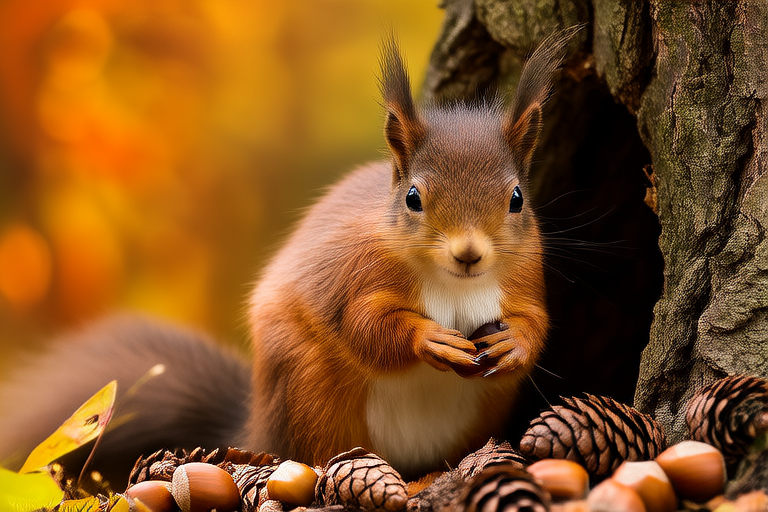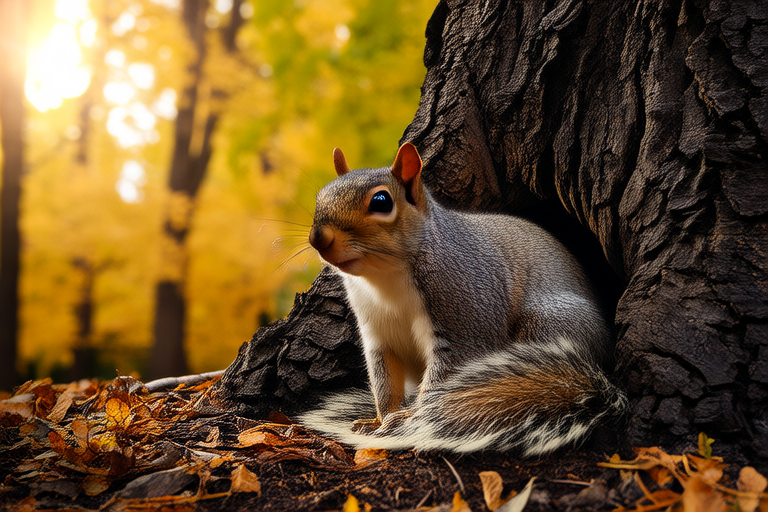
How to Build the Perfect Backyard Habitat for Wild Squirrels
Welcome to your guide on creating a perfect backyard habitat for wild squirrels! This comprehensive guide will walk you through the essential steps to attract and support these delightful creatures, ensuring they thrive in your garden. By following our advice, you’ll not only enhance your outdoor space but also contribute positively to local biodiversity.
Selecting Appropriate Food Sources
Feeding squirrels is one of the most enjoyable aspects of having them around. A balanced diet that mimics their natural diet will keep them healthy and active. Consider offering a variety of foods such as nuts, seeds, fruits, and vegetables. Squirrels love acorns, walnuts, and pecans. Sunflower seeds, pumpkin seeds, and peanuts provide essential fats and proteins. Additionally, offer fresh fruit like apples, pears, or berries. Remember to place food in sturdy feeders designed for squirrels to avoid attracting unwanted pests. Ensure food remains accessible throughout the year, especially during winter when natural food sources may be scarce.
Providing Safe Water Access
Water is crucial for squirrels’ survival, so it’s important to provide a reliable source. Install a shallow birdbath or a small pond with gentle slopes for easy access. Change the water regularly to prevent stagnation and disease. In colder months, consider a heated bird bath to keep water from freezing. This not only ensures squirrels have clean drinking water but also provides a refreshing spot for them to cool off in warmer weather.
Creating Nesting Areas
Nesting areas are vital for squirrels’ safety and comfort. They prefer natural materials like leaves, grass, and twigs. You can encourage squirrels to nest in your yard by planting dense shrubs and trees. Evergreen species like pine and spruce provide excellent shelter and insulation. Additionally, consider building squirrel boxes or nests. These should be placed high up in trees, at least 10 feet above ground, to protect them from predators. Ensure the entrance hole is large enough for squirrels but too small for raccoons or larger animals. Providing multiple nesting options increases the chances of attracting a variety of squirrels to your garden.
Installing Climbing Structures
Squirrels are natural climbers, and providing ample opportunities for them to exercise this skill enhances their well-being. Install platforms, ladders, and ropes within your garden. Trees are ideal for this purpose; plant various species to offer different textures and challenges. Avoid using treated wood, which can leach harmful chemicals into the environment. If you’re adding artificial structures, ensure they are stable and secure. Climbing structures not only entertain squirrels but also provide them with places to escape potential threats.
Maintaining a Squirrel-Friendly Garden Layout
A well-planned garden layout can significantly enhance the appeal of your backyard for squirrels. Incorporate native plants that provide both food and shelter. Native flowers, shrubs, and trees support local ecosystems by attracting pollinators and other beneficial insects. Mulch pathways and ground cover areas with organic materials like wood chips or bark. This not only aids in moisture retention but also creates a natural habitat for insects and small mammals. Avoid pesticides and chemical fertilizers, as they can harm squirrels and other wildlife. Instead, opt for organic gardening practices to maintain a healthy, sustainable environment.
Emphasizing Natural Elements and Minimizing Hazards
While creating a welcoming habitat, it’s crucial to prioritize natural elements over synthetic ones. Use natural mulches, stones, and logs to enhance the aesthetic appeal while providing functional benefits. Avoid placing metal objects, which can become dangerous traps for curious squirrels. Ensure all structures are stable and secure to prevent accidents. Regularly check and maintain your garden to remove any potential hazards. Encourage a diverse ecosystem by planting a variety of plants that support different wildlife. This approach fosters a balanced environment where squirrels and other animals coexist harmoniously.
Tips for Observing Squirrels Without Disturbing Them
Observing squirrels can be a rewarding experience. To do so without disturbing them, establish a viewing area away from feeding stations. Use binoculars or a camera with a zoom lens for close-up views. Avoid sudden movements or loud noises that might startle the animals. Patience is key; spend time in your garden and let the squirrels become accustomed to your presence. Over time, they may even approach you more comfortably. Keep a journal of your observations, noting behaviors, interactions, and seasonal changes. This practice can deepen your understanding and appreciation of these fascinating creatures.
Maintaining a Healthy Balance with Other Wildlife
While attracting squirrels is exciting, it’s equally important to consider the impact on other wildlife. Ensure your garden supports a variety of species, providing resources for birds, insects, and other small mammals. Plant a mix of native and non-native plants to cater to different dietary needs. Introduce bird feeders and baths to attract feathered friends. By fostering a diverse ecosystem, you promote ecological balance and resilience. Be mindful of potential conflicts between squirrels and other animals, such as birds competing for feeder space. Implement strategies like separating feeding areas or offering alternative food sources to minimize competition.
In conclusion, building a perfect backyard habitat for wild squirrels involves careful planning and thoughtful implementation. By focusing on natural elements, providing essential resources, and minimizing hazards, you create a sanctuary where squirrels can flourish. Enjoy the process of enhancing your garden and contributing to the broader ecosystem. Happy gardening!





